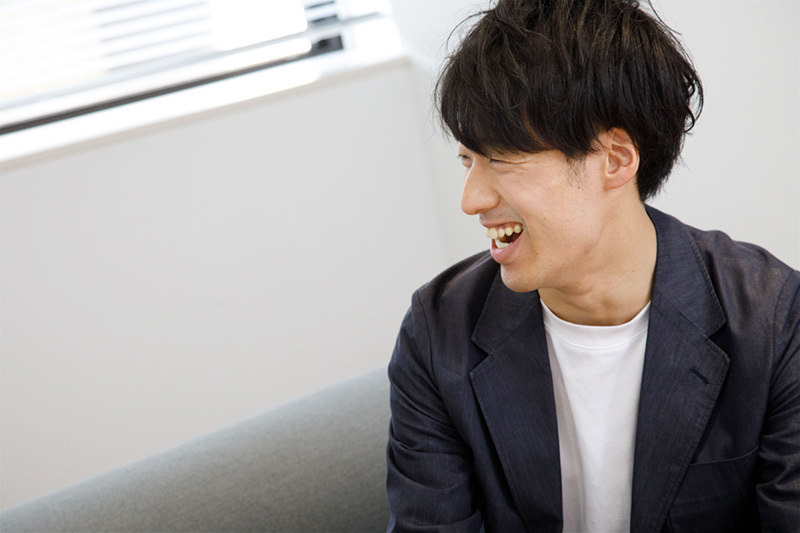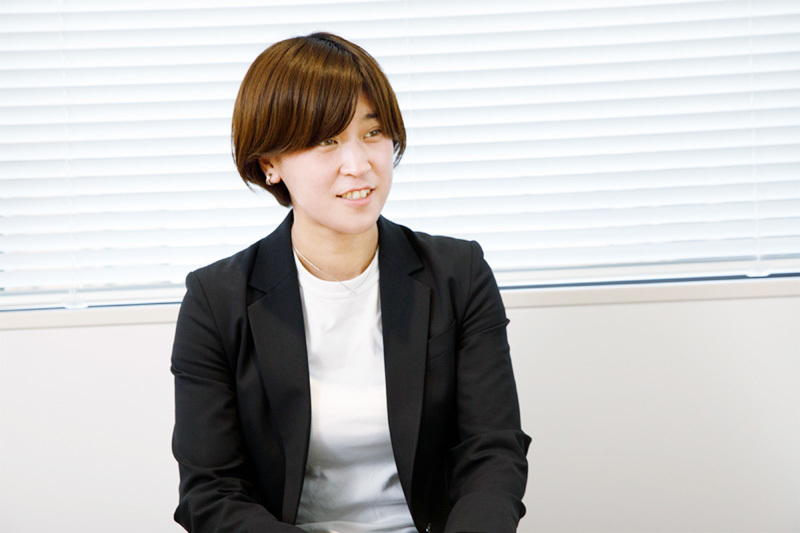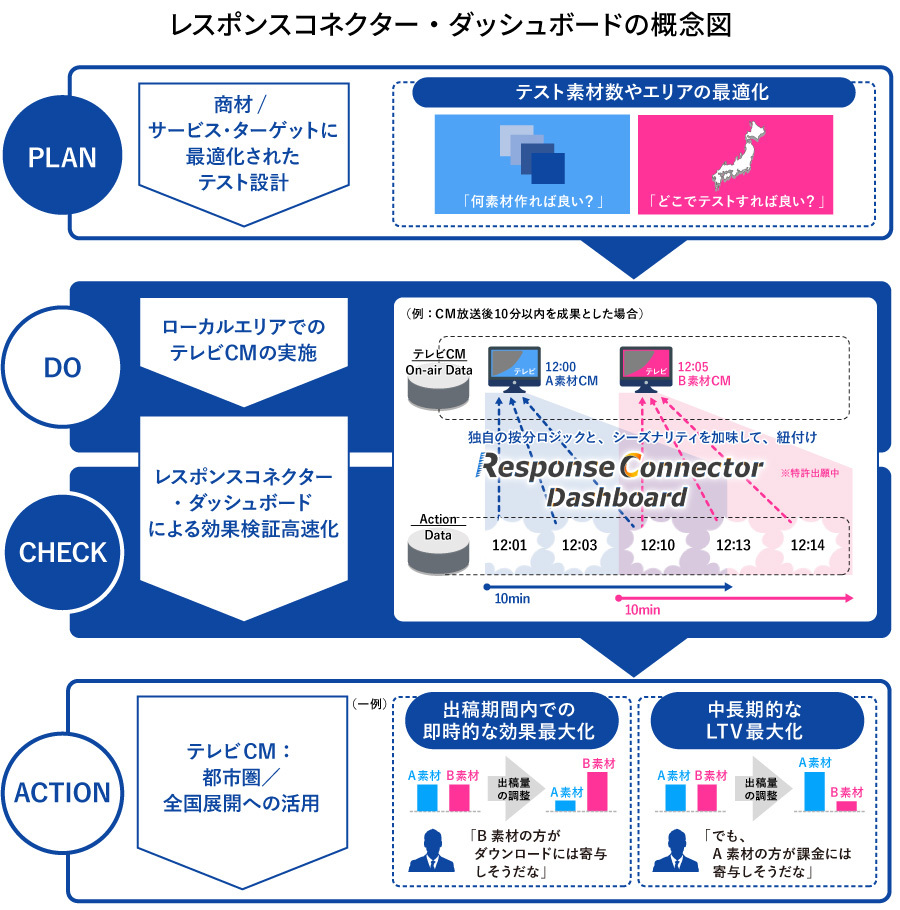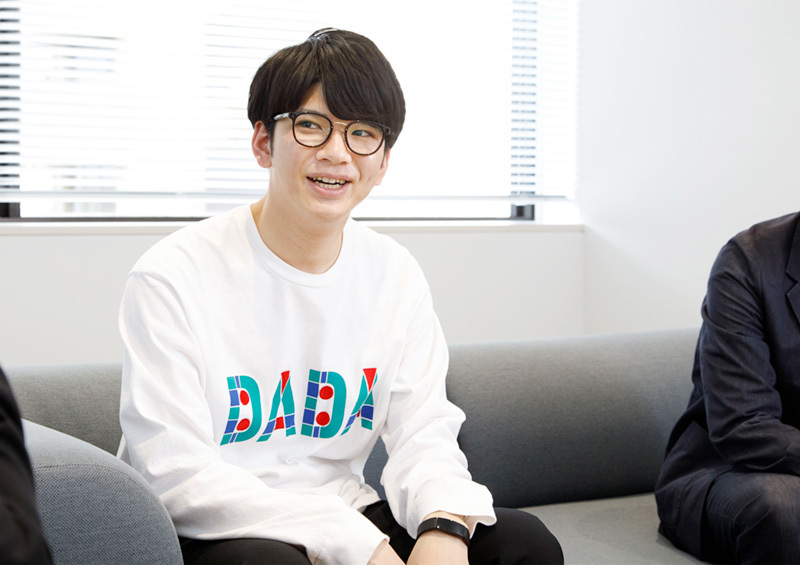The startup company "hey," which operates "STORES" to support store digitalization, is working hand-in-hand with Dentsu Inc. to maximize the effectiveness of TV commercials, undertaking new challenges that break free from conventional wisdom.
Following our previous discussion on achieving rapid PDCA cycles with TV commercials, hey's Marketing Director Yusuke Yamasaki, Dentsu Inc. Account Lead Mai Sakaguchi, and Planner Daiki Hama discuss TV commercial strategy and approaches to non-TV media.
【 What is STORES? 】
A platform supporting store digitalization. It offers the online store creation and management service "STORES," the cashless payment service "STORES Payment," and the online reservation system "STORES Reservation. " https://stores.jp

From left: Mai Sakaguchi (Account Lead, Dentsu Inc.), Yusuke Yamasaki (Marketing Director, hey), Daiki Hama (Planner, Dentsu Inc.)
On-site judgment is essential for creating good TV commercials
Hama: I'd like to ask a bit about the commercial we produced this time. For system service TV commercials targeting B2B, 30 seconds is standard. What was the reasoning behind choosing 15 seconds?
Yamazaki: With B2B, there's often concern that business explanations need more time to get across, so 30 seconds is common. For "STORES" online shops, cashless payments, and reservation systems, the usage scenarios are easy to visualize, so we asked for a 15-second format. Since 15 seconds has lower distribution costs than 30 seconds, we also wanted to test it first.
Sakaguchi: At the orientation stage, we weren't sure if we could pull it off in 15 seconds, so we first created 15-second versions of the three services as a format. Then, with advice from Mr. Yamazaki on-site, we re-edited the three CMs to create the "All-in-One Digital Store" version, and it fit perfectly.
Hama: It's refreshing that it came from on-site judgment. Usually, you get storyboards or proposals approved beforehand and build from there, right?
Yamazaki: We don't change the core idea from the proposal stage, but it's better to decide the editing direction during filming. We see strong expressions and powerful comments during actual shoots. We make on-site decisions with the perspective of how to translate that communication strength into benefits for "STORES."
When I visited the editing room, I was surprised to see patterns that deviated completely from the script alongside the scripted ones. The structure truly leveraged the powerful visuals we captured on set. If we had insisted on sticking strictly to the script, this TV commercial wouldn't have been possible. I'm truly grateful to the creative team for guiding the "STORES" brand so effectively.
Hama: The commercial features comedian Kazuya Kojima. There's always debate about whether talent fees in TV commercials justify the CPA (Cost Per Action) and how they contribute. How do you, Mr. Yamazaki, view the significance of using talent?
Yamazaki: Talents possess recognizable attributes like their character and image. I believe the significance of using talent lies in leveraging those recognizable attributes to accelerate product communication. Therefore, we thoroughly check all the TV shows and YouTube channels the talent appears in, and we also meticulously research the history that shaped their current character.
Hama: I see. I'd also like to hear why you chose Mr. Kojima.
Yamazaki: Due to the impact of COVID-19, shopping districts and stores are currently struggling. Precisely because it's a tough time, we wanted to be someone people could easily talk to when they're in trouble, not just someone pushing sales unilaterally. When the creative team mentioned the keyword "prosperous business," everything clicked into place.
This aligns with hey's mission of "Just for Fun." We believed that wishing for the prosperity of all the shops, just like how festivals liven up shopping districts, was the essential communication "STORES" needed. When considering who could convey this, Kojima-san's perceived attributes – his approachability, brightness, and sincerity – were the perfect fit.
Hama: It's true—when Mr. Kojima cheers you on, it feels genuinely convincing and just makes you genuinely happy, doesn't it?
Yamazaki: In the TV commercial, Mr. Kojima wears a happi coat and walks through the shopping district. In reality, hey employees also wear the same happi coats and conduct online shop setup seminars for local governments nationwide. Thanks to the TV commercial image, locals warmly welcome us, saying things like, "Hey, happi-coated guy, teach me this!"

User-centric thinking is crucial, not media-centric
Hama: Last time, you mentioned that "TV commercials that can't prompt viewer action are pointless." Recently, we've seen more cases where TV commercial footage is repurposed for other media like SNS, YouTube, and TVer. Since you've been involved in media strategies beyond TV, I'd like to hear your thoughts on this.
Yamasaki: What we need to consider is the characteristics of each medium. For YouTube, the audience is mostly smartphone users, and the ads are viewed before, after, or during the videos they want to watch. We must think about what content is most appropriate for those video ads. To put it simply, I think it's a mistake to just take the 15-second TV commercial we're running and put it directly on YouTube.
Hama: If the design is solid, can YouTube ads still be effective?
Yamazaki: Absolutely. Fundamentally, mass advertising and digital advertising serve different roles. I don't see one as superior to the other; rather, they complement each other.
Currently, our TV commercials emphasize phone support for account setup. This is because we believe that being able to get immediate answers by phone reassures users who are less comfortable with the internet.
On the other hand, digital ads target people who are actively searching, so we communicate more specific details. For example, we highlight how the platform offers a wide range of templates, allowing even beginners to create high-design pages.
For example, in YouTube ads, if we suggest "Why not try selling on STORES?" to someone watching handmade craft videos, it creates a clear mental image.
Sakaguchi: The approach isn't media-centric, but user-centric. It starts with the question: "What should we emphasize on each media platform to motivate these people? How can we best communicate this?" That's why they can develop strategies that aren't constrained by the media.

Evaluating whether communication is effective across media
Hama: For the "STORES" TV commercial campaign, we used the " Response Connector Dashboard " as a tool to measure whether the TV ads prompted viewer action. Could this same tool also serve as a decision-making factor when expanding to media beyond TV in the future?
[What is the Response Connector Dashboard?]
A tool that links each individual commercial to the advertiser's set KPIs, enabling detailed verification of campaign effectiveness. It analyzes which days and times the commercial was effective, visualizing the "immediate advertising impact" on users. Furthermore, it enables continuous analysis of "mid-to-long-term advertising impact," such as high-quality user responses, including LTV (Life Time Value). The measurement logic for this tool is patent-pending, and it has already been provided to over 50 companies ( release here ).

Yamazaki: Yes. Some might perceive the "Response Connector Dashboard" as a tool for managing TV commercials like digital ads, but I believe it's more accurately understood as "a decision-making tool for conducting appropriate communication across each media channel."
Hama: We chose the abstract name "Response Connector" to signify its ability to handle all types of responses to TV commercials. While this release focuses on site visits, responses can include lead requests, paid transactions, or social media mentions. Optimizing which responses to track based on business objectives is our job as planners.
Yamasaki: The first step is determining what to link to the TV commercial airing data. For "STORES," that was "new visits to the 'STORES' site within 30 minutes after airing." If we can clearly define what response we want for each business, I believe we can better leverage the potential of television as a medium.

Hama: After releasing the "Response Connector Dashboard," we received inquiries from many clients, which honestly surprised me. It also made me keenly aware that each company has such diverse KPIs. In today's world where the term "DX" often takes on a life of its own, the idea of "seeing ad effectiveness on a dashboard" seems to sound appealing, for better or worse (laughs).
However, tools like this often become ends in themselves. So, regardless of industry or company, I hope agencies will work as a team, using the Response Connector Dashboard as one decision-making tool to maximize communication effectiveness and, ultimately, business growth.
Yamazaki: I believe the right TV programs vary by company and industry. What works for Company A might not work for Company B. When we shift our perspective from "buying slots" to "delivering content," I've found it significantly expands the range of programs and regions where commercials can be considered.
Many STORES owners are expanding their business reach through digitalization, showcasing regional appeal nationwide. We'll strive to become partners who boost local economies together, not just run ads and stop there.
※DX (Digital Transformation): The process of transforming people's lives and business outcomes for the better by permeating digital technology.











